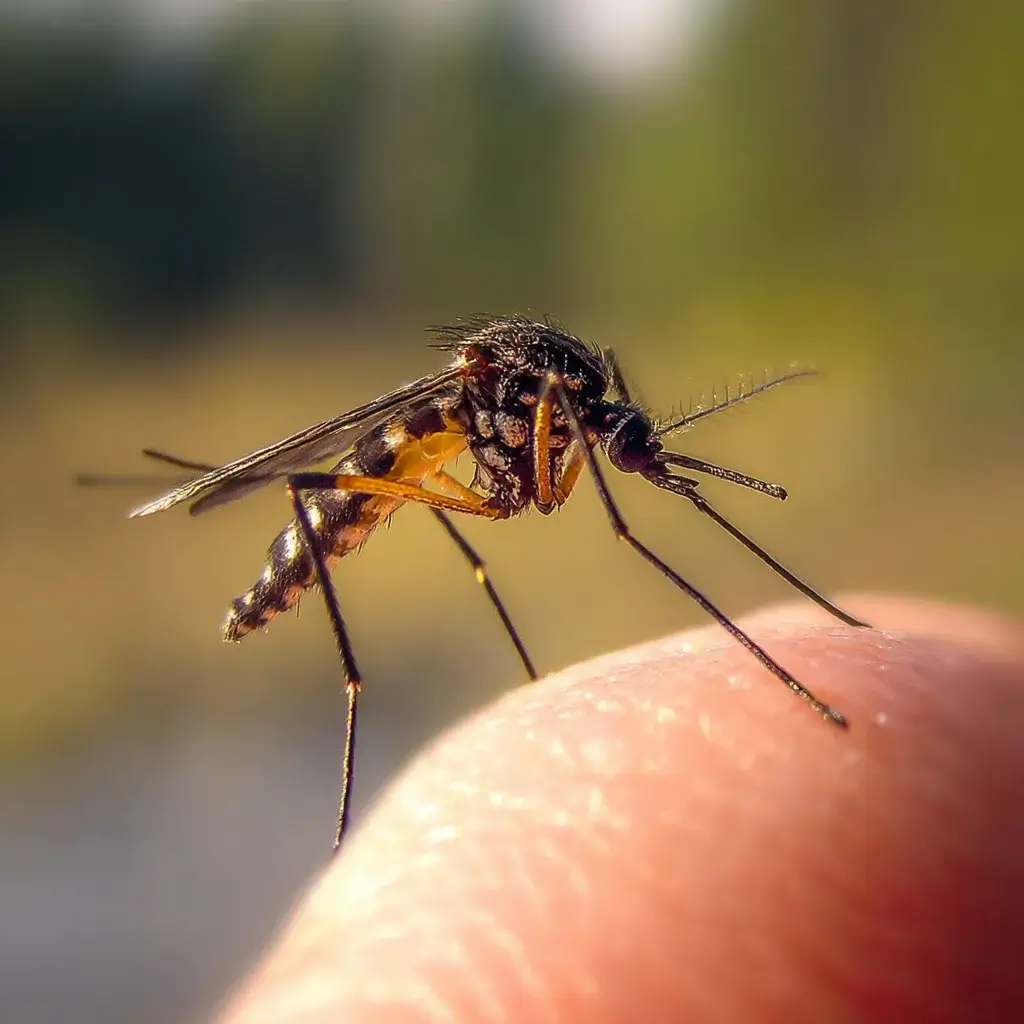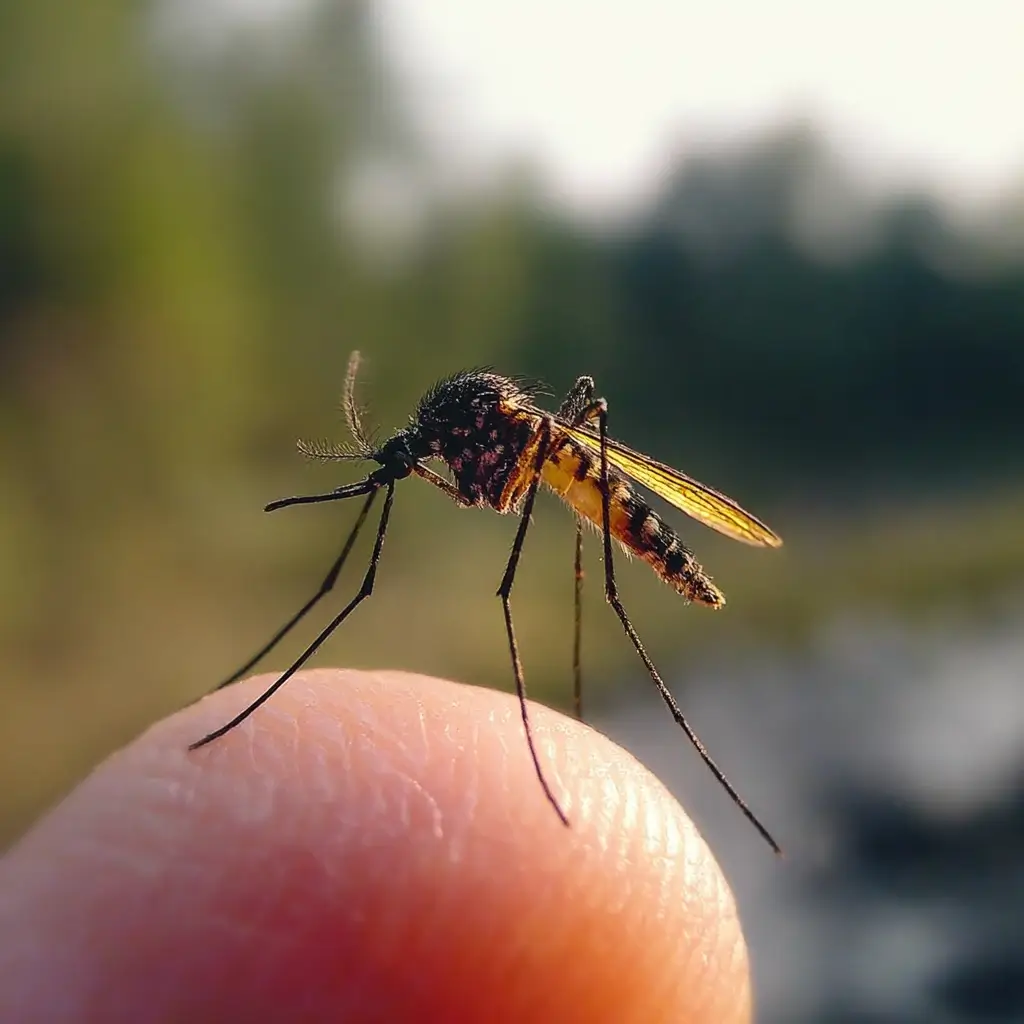
Gallinipper Mosquito
What Is a Gallinipper Mosquito?
The Gallinipper Mosquito (Psorophora ciliata) is a giant mosquito native to North Carolina and Florida, the southeastern U.S., Central America, and as far south as the Buenos Aires Province. This species is not your average backyard nuisance—known for its large size, painful bite, and aggressive behavior, it's commonly mistaken for crane flies or other insects due to its similar appearance.
Key Facts About the Gallinipper Mosquito
The Giant Mosquito
The Gallinipper Mosquito stands out for its massive size. With a wing length of up to 7mm and long, shaggy legs, this mosquito earns its nickname “shaggy legged gallinipper.”
Painful Bite
Its appearance can confuse people into thinking it's a harmless crane fly, but this species is far more aggressive. Its long, serrated mouth parts allow it to pierce clothing and deliver a notably painful bite.
Behaviors
Behaviorally, this mosquito is both a day and night flyer, showing high levels of activity in a variety of environments. It thrives in moist soil, low lying areas, and spots where rain collects.
Laying Eggs
Female gallinippers typically lay eggs in grassy, damp areas that are prone to seasonal flooding. Once hatched, the larvae are highly aggressive, known to feed on tadpoles, aquatic invertebrates, and other mosquito larvae.
Natural Predators
Natural predators of this species include ants, frogs, birds, and other animals. The gallinipper’s aggressive nature helps it outcompete other species, but its sheer size and activity level often make it a target.
Where Are Gallinipper Mosquitoes Found?

Gallinippers are often found in the wetlands and flood zones of southern states, where moist soil, humidity, and abundant standing water provide ideal breeding conditions. Populations also extend throughout Central America and the Buenos Aires Province.
After heavy rains, eggs of the species psorophora ciliata hatch rapidly in these areas, where seasonal water collects. The eggs can remain dormant in dry conditions for long periods, only activating when flooding occurs, particularly in spring and early summer months.
Risks of Gallinippers: More Than Just a Bite
Though not widely known to carry diseases, gallinippers still pose health and comfort concerns. Like many mosquito species, they may carry and transmit West Nile Virus, especially in areas with dense populations of mosquitoes or during regional outbreaks.
As a floodwater mosquito, the gallinipper emerges suddenly and in large numbers following storms or seasonal flooding, making them an intense and unpredictable pest to deal with.
Lifecycle of Psorophora Ciliata

The lifecycle of psorophora ciliata begins when females lay eggs in damp areas such as moist soil or vegetated floodplains. These eggs have a remarkable ability to remain dormant until triggered by rising water levels. Once submerged, they hatch into voracious larvae during the larval stage, where they actively feed on other mosquito larvae, small tadpoles, and even aquatic invertebrates.
Their rapid development allows them to emerge as aggressive adults quickly, often appearing in noticeable swarms after heavy rain. These floodwater mosquito outbreaks typically include both gallinippers and the marsh mosquito, another pest of concern.
Gallinippers vs. Crane Flies
Many people initially mistake gallinippers for crane flies due to their similar appearance and large size. However, while crane flies do not bite and are harmless, gallinippers actively feed on humans and deliver a sharp sting. Their presence should not be ignored, especially in flood-prone areas.
Frequently Asked Questions
Can Gallinippers Carry Diseases?
While they are not as widely studied as some other mosquitoes, gallinippers may still carry diseases such as West Nile Virus. Their potential to act as vectors becomes more concerning when they appear in large numbers after flooding events.
Are They Dangerous to Humans?
The gallinipper’s main threat is its painful bite, which can lead to swelling, infection, or allergic reaction. While not typically dangerous in a medical sense, their presence causes significant discomfort and anxiety for humans, especially in outdoor settings.
What Are Their Natural Predators?
Gallinippers, especially in their larval stage, face predation from tadpoles, fish, and other possible predators such as beetles and predatory insects. Some other species of mosquitoes will even consume the larvae of their own kind, creating a complex web of interspecies competition.
Do Gallinipper Mosquitos Bite?
Gallinippers do bite like mosquitoes, but with far more force. Their bite is often compared to a bee sting, capable of piercing through denim or work clothing. Unlike most common mosquito bites, which can go unnoticed until itching sets in, the gallinipper’s bite is instant and unmistakably painful.
How Painful Is a Gallinipper Bite?
According to reports from affected humans, the bite of a gallinipper is not only painful—it’s startling. Though not typically dangerous, the pain can persist for hours and, if scratched, can lead to secondary infection. Their aggressive flying and feeding behaviors only add to the discomfort.

